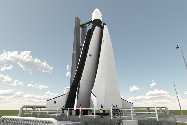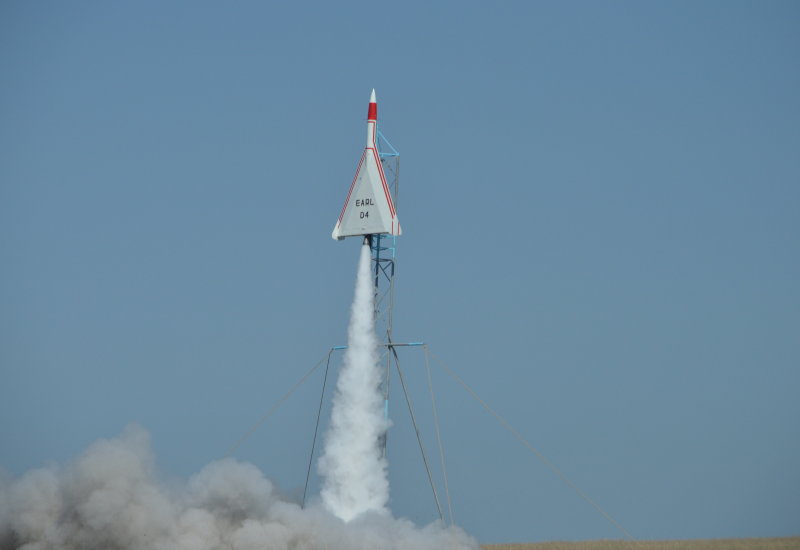




This web site is being run by a company called Spacefleet Ltd. I'm Raymond Wright, the founder of the company. Like many of you I'm a Dan Dare enthusiast, which I first became in 1960, at the tender age of eight. By then the first satellite had been launched into space, and Yuri Gagarin's epic first human flight into space came in the following year. I had been a space-obsessive, though, since 1957, when Sputnik 1 went into orbit.
I retired from the electricity supply industry in 1991. On retiring, what to do? Well, I wanted to make Spacefleet real and to concentrate on building and demonstrating real spacecraft, that can fly into space just as aircraft do, between cities, now. You might be thinking that costs billions, and therefore I'm just a dreamer, aren't I? It isn't so. In a few month's time we (it's not just me...) will be able to send a "space dart" to the edge of space for less cost than, say, a second-hand car.
Why are there no spaceships now, after more than 50 years of space launches? There's no commercial need for it. Satellite services are of such high value that throw-away launchers, even though they each cost hundreds of millions of dollars, are only small fractions of the costs and a tiny fraction of the revenues from the satellites that they put into orbit. However, what about astronomy satellites, planetary probes, and human space travel? That is happening, of course, but at a very slow pace, because the payment for it has to come out of government science budgets. The space shuttle, impressive though it was, cost $450M every time it was launched. It was intended to bring the cost of space access down, and, instead, it increased it. Does that make any kind of sense?
Space exploration, and any other currently -non-commercial use is being held back by the horrendous cost, and waste, of space launch. In the 1960s, in the UK, the then British Aircraft Corporation designed a solution to the cost of space launch, using off-the-shelf materials and rocket engines. It wasn't quite a spaceship in a single hull, but it was the next best thing - three re-usable aerodynamic rocket-propelled vehicles, clamped together at launch and separating in the upper atmosphere. The middle hull goes on into orbit, and the two booster glide back to land on a runway, which the orbiting vehicle also does on completion of its mission. The UK government declined to support it, and, after 20 years or so of development on paper, the company gave up. Nothing was ever tested, apart from models in a wind tunnel.
Things have changed since the 1960s. Human pilots are no longer needed to control aircraft. That can be done automatically, with electronics. As well as that, engineering has become cheaper, generally, with computer-controlled tools, and 3D fabricators, etc. It is also possible to start small (and cheaply), and then proceed, gaining knowledge, profile, and trust, along the way, and the attention of other like-minded people, to join in. That has already started to happen. In 2018, a 2.5 metre long aerodynamic rocket-powered "drone" took off reached its peak height and glided down under automatic control, to the ground. With some more modestly priced development, we should be able to get a single hull up to 100,000 feet or so - 1/3 of the way into space. After that, sub-orbital space can be reached by scaling up, by a factor of three or so, and with a further, similar, increase in scale, orbital flight will follow.
The journey has started, and there is a plan to complete it. Spacefleet is already beginning to make a name for itself. With more people (no need for millionaires) involved, it can go faster. If you'd like to know more, do get in touch (rdw@spacefleet.org, or take a look at: https://www.spacefleet.org).

EARL-D4: 2.5 m long. Reached a height of ~13,000 feet. could go a lot higher with better propellant.